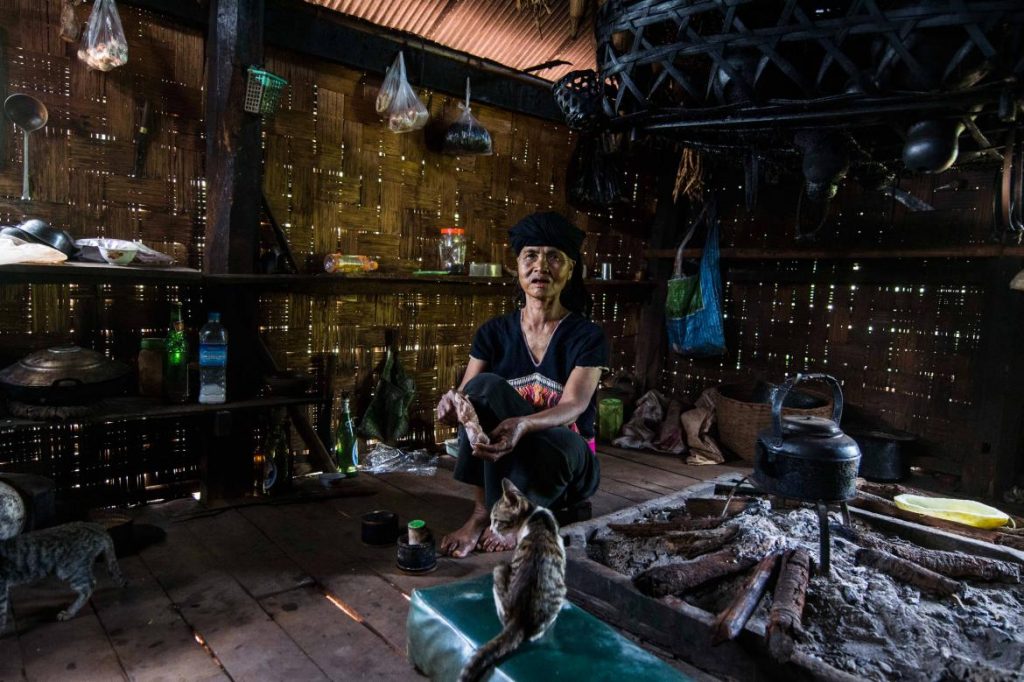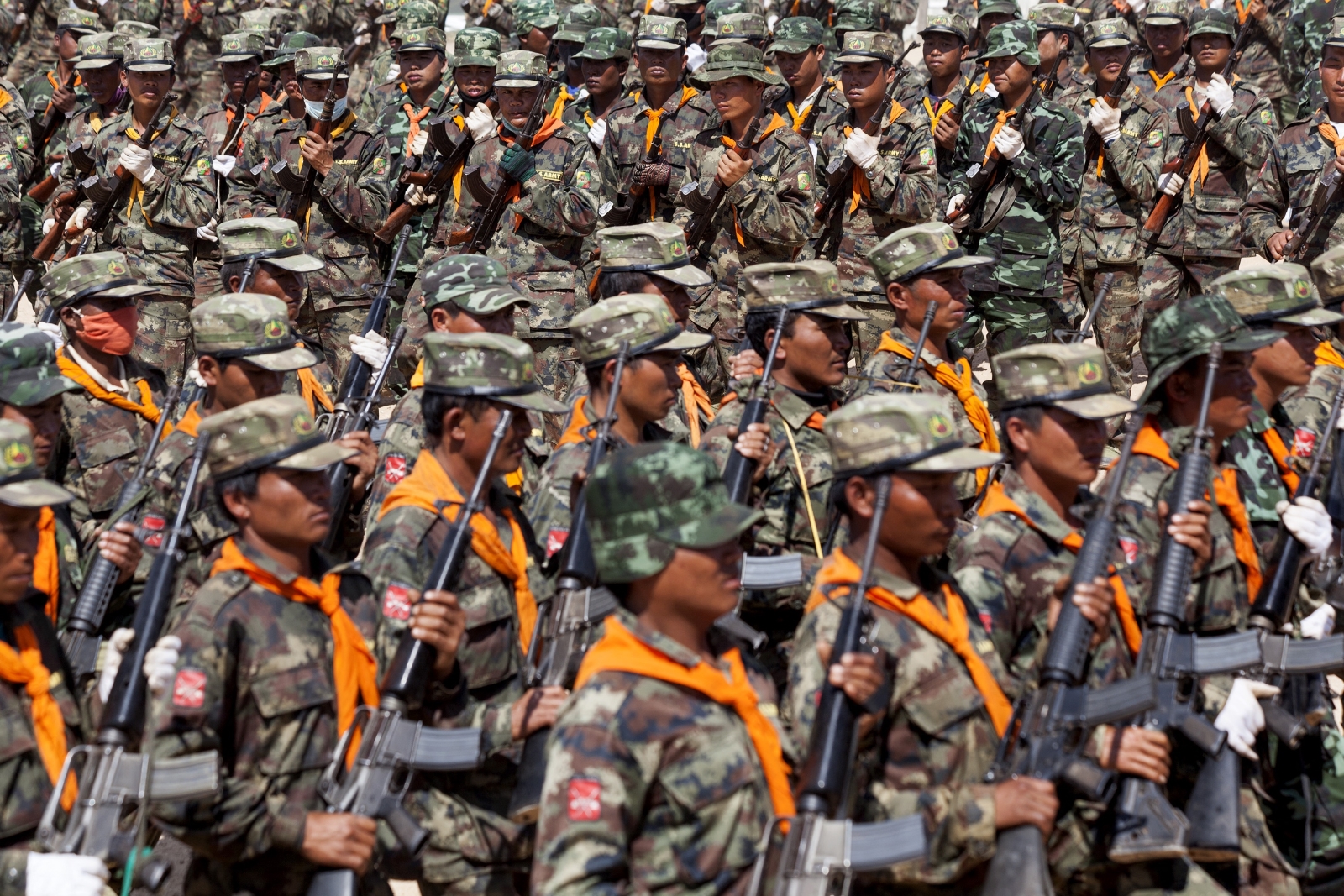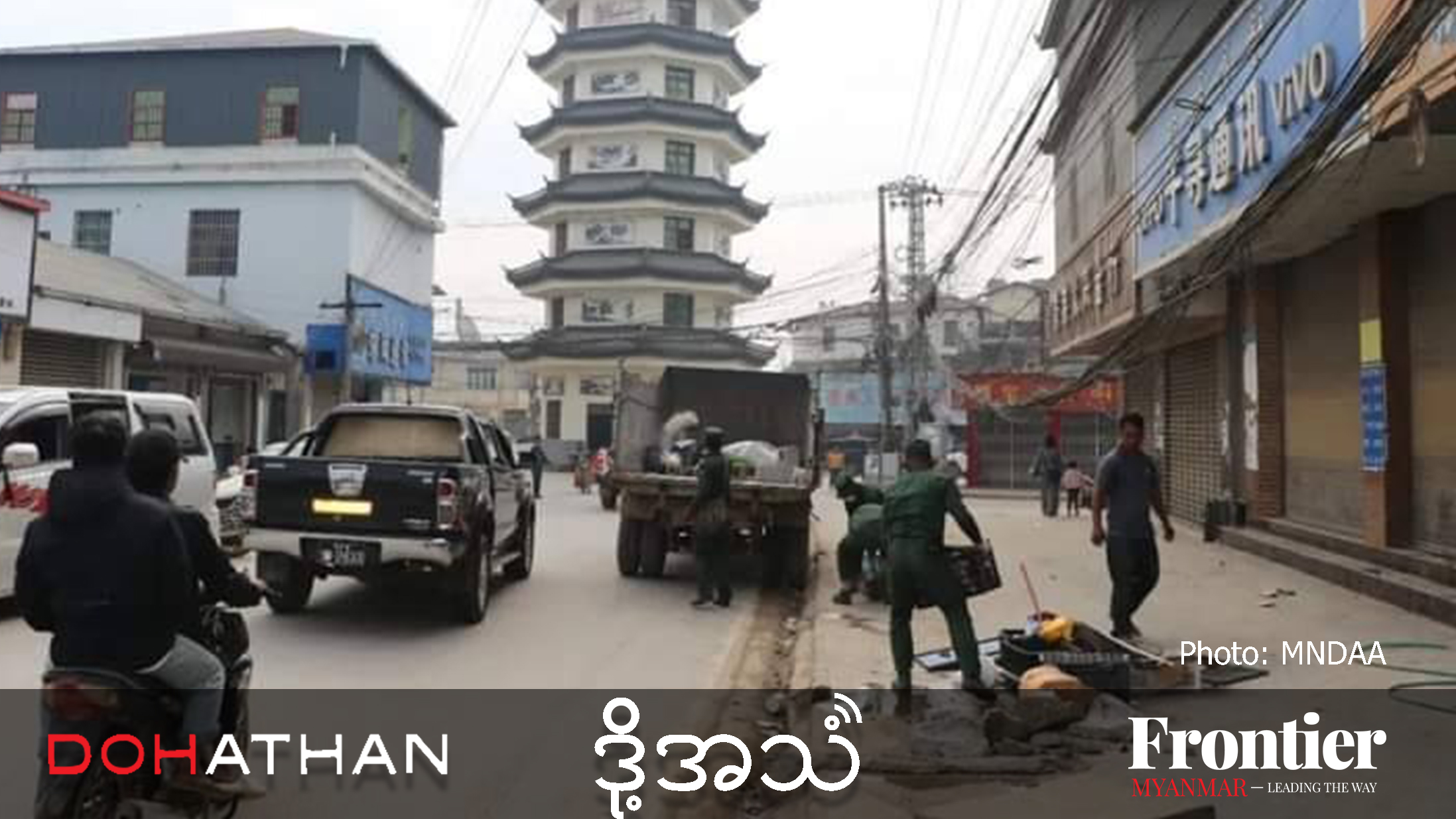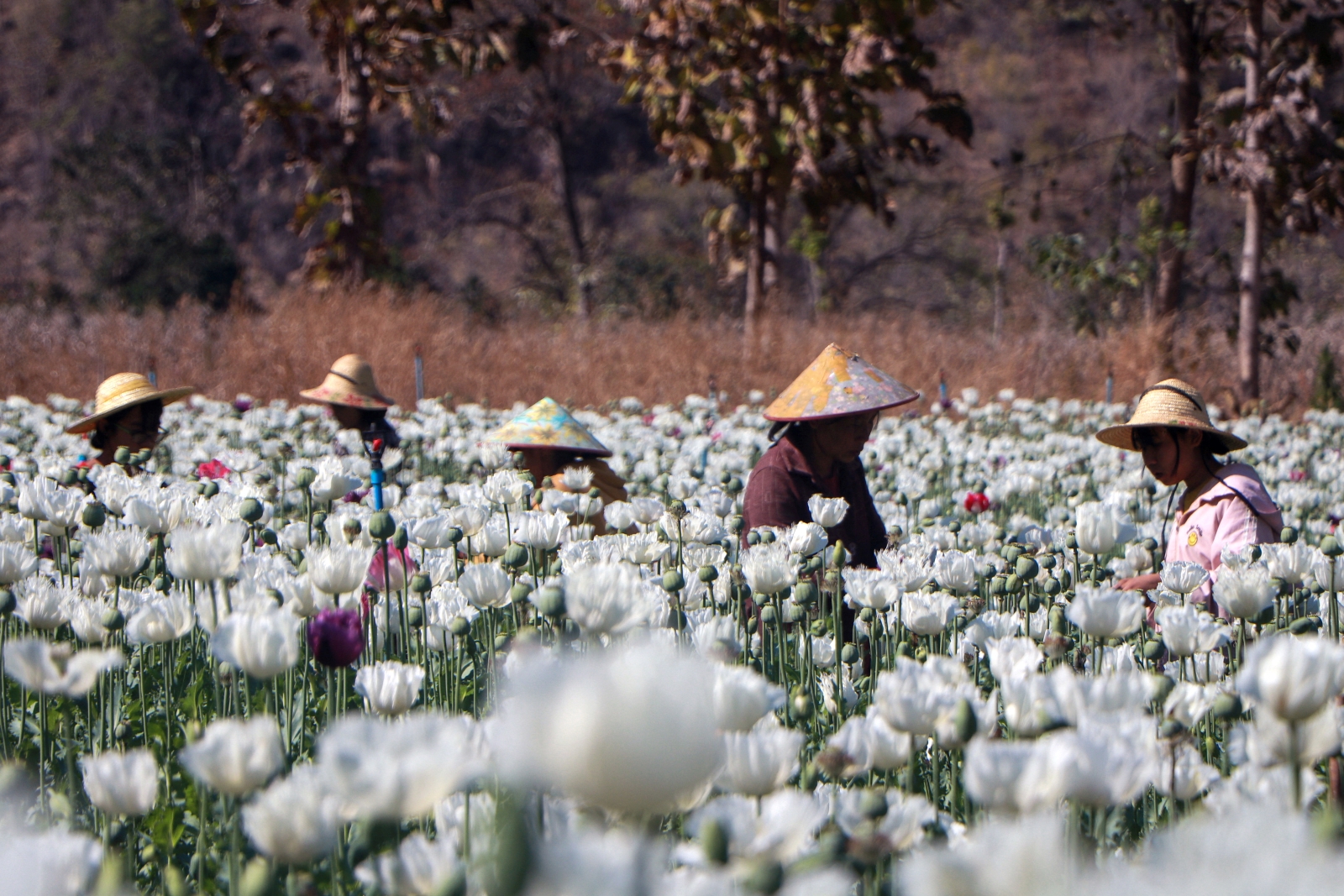Members of one of the smallest Shan ethnic groups live in constant fear of having to pay taxes or provide conscripts to one of the nation’s biggest ethnic armed organisations.
By NYAN HLAING LYNN | FRONTIER
Photos TEZA HLAING
THE TWO women with brown, wrinkled faces were standing outside a shop on the side of a road where traffic was trailing clouds of red dust into the air. One of them, in a hand-woven black skirt and blouse, was selling the carcass of a hare.
Her potential customers that cool morning at Nansang were mainly Shan and Pa-O, two of the biggest ethnic groups in southern Shan State. The two women, who spoke neither language well, were from one of the smallest of the 33 officially recognised Shan ethnic groups, the Yin Net.
Partly due to the communication issue, after a long wait, the hare remained unsold – one motorbike taxi driver had tried to barter with the lady, but they couldn’t agree on a price. After a disappointing day, the women left Nansang to travel to their village in the nearby picturesque hills.
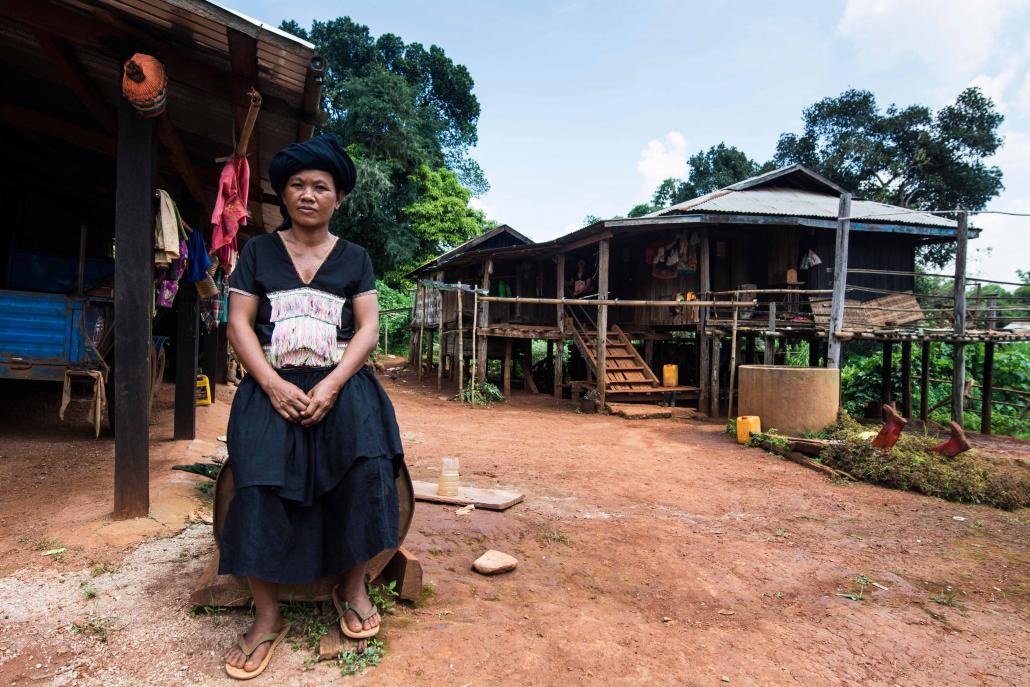
The Yin Net are one of the smallest of the 33 recognised ethnic Shan groups. (Teza Hlaing / Frontier)
Support more independent journalism like this. Sign up to be a Frontier member.
The Yin Net live in small, isolated villages on both sides of the Nansang-Kholam road in areas beyond the reach of the government. Most of the villages are under the control of the Restoration Council of Shan State and its military wing, the Shan State Army-South, one of the many ethnic armed groups or Tatmadaw-aligned militia that operate in the region.
A source of great pride among the Yin Net is the belief that they are descended from one of the great monarchs of the Bagan dynasty, King Kyansittha, who reigned from 1084 to 1113 and whose accomplishments included building the Ananda Temple.
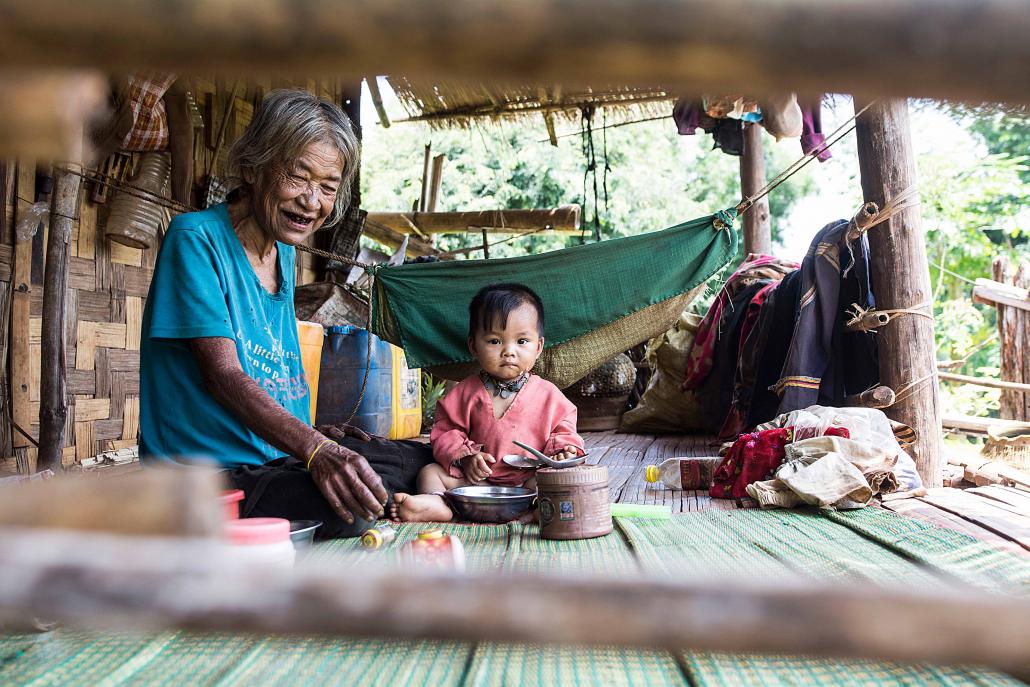
Teza Hlaing / Frontier
At a Yin Net village of about 100 modest huts a few kilometres down a rough, potholed red dirt road, the residents told Frontier through an interpreter that their dances, musical instruments and even their crops were bequeathed to them by Kyansittha.
It is not legend, they insisted — it is history. Many Yin Net do not have a record of their age but they are certain they are ancestors of Kyansittha.
tzh_yinn_tribes49.jpg
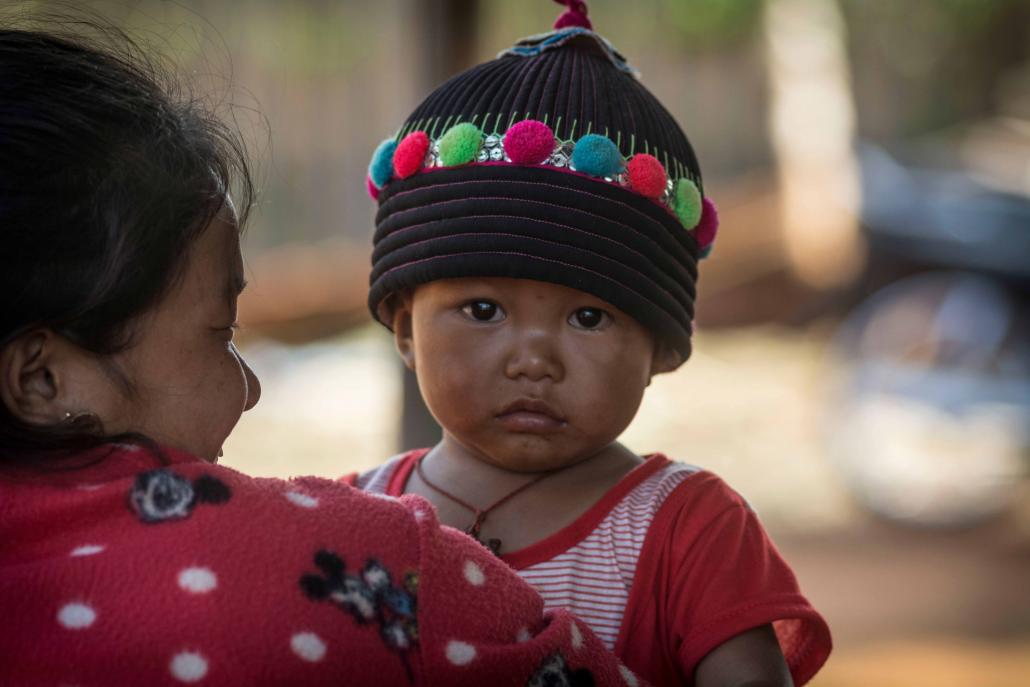
Teza Hlaing / Frontier
An unexpected discovery in the village was the number of vehicles covered by tarpaulins. They included Hondas, Toyotas and Chevrolets and were mainly pick-ups and SUVs. The land is fertile and many Yin Net have prospered from growing crops such as corn, paddy, sesame and beans and pulses. As well as modern cars and agricultural machinery, many households have TV sets.
The Yin Net, who like to chew betel mixed with catechu, an astringent derived from some species of acacia, are careful to conceal their wealth because they live in constant fear of armed groups that demand they pay “taxes” and supply conscripts.
tzh_yinn_tribes33.jpg
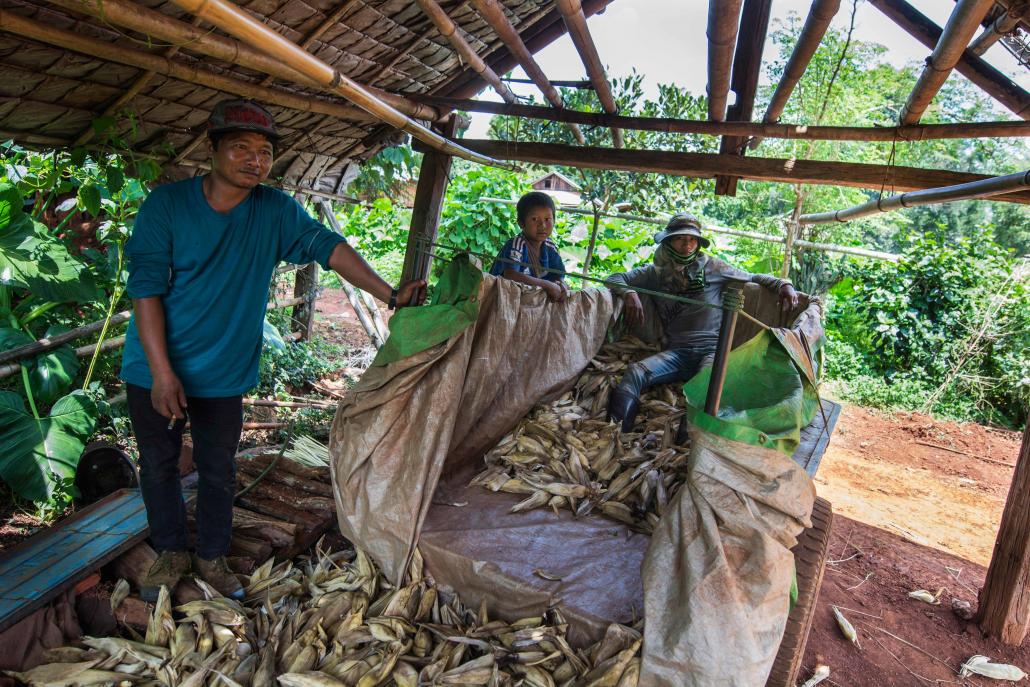
Teza Hlaing / Frontier
If a Yin Net village in an area under RCSS control cannot supply enough men or boys to be forcibly recruited into the Shan State Army-South, it will be fined, villagers told Frontier, adding that payments were also demanded for unlicensed vehicles.
“Sometimes men pay others to serve on their behalf and other villagers help to cover the cost,” a villager told Frontier. “We also help affected families with their farm work.”
The United Nations has named the Shan State Army-South as one of seven ethnic armed groups that are “persistent perpetrators” in the recruitment of child solders, about 800 of whom have so far been discharged from the Tatmadaw under an agreement reached in 2012.
tzh_yinn_tribes20.jpg
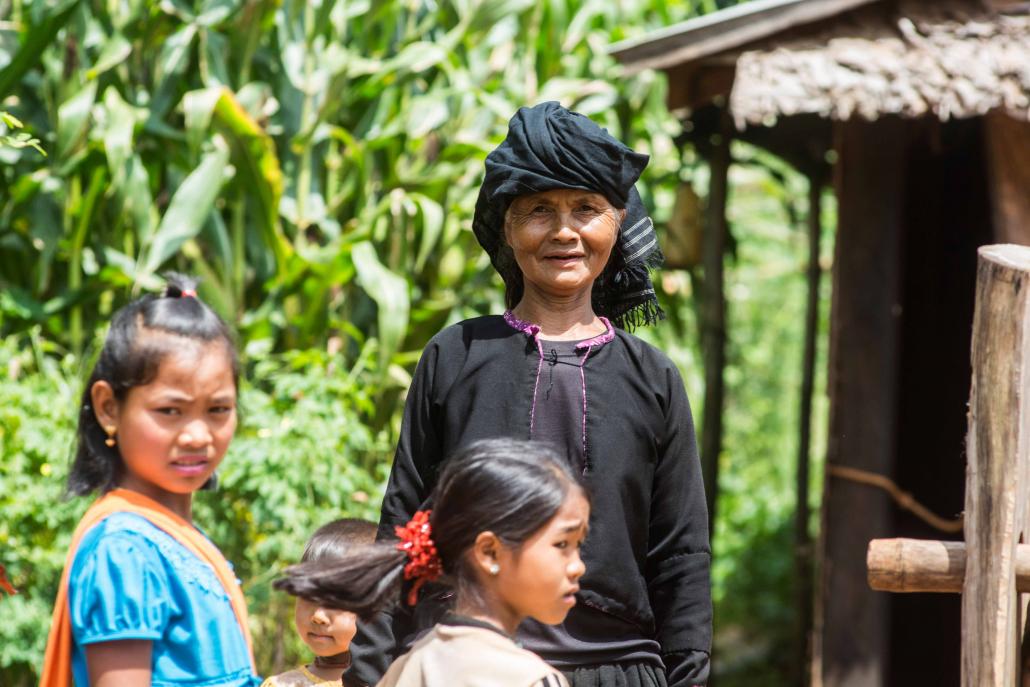
Teza Hlaing / Frontier
When there is fighting, Yin Net villagers said they often seek refuge in other communities on the Nansang side of the Nantein Creek, an area under government control.
Frontier encountered a group of eight Yin Net aged between eight and 15 who had fled across the creek to a village and were calling home on their mobile phones to find out if it was safe to return and go back to work.
“If the situation is bad, we return to the village secretly in the morning to work and return to our hiding place in the evening,” said the eldest of the boys.
Colonel Soe Moe Aung, Shan State’s minister for security and border affairs, told Frontier that only members within the respective armed groups could comment on the accusations.
tzh_yinn_tribes45.jpg
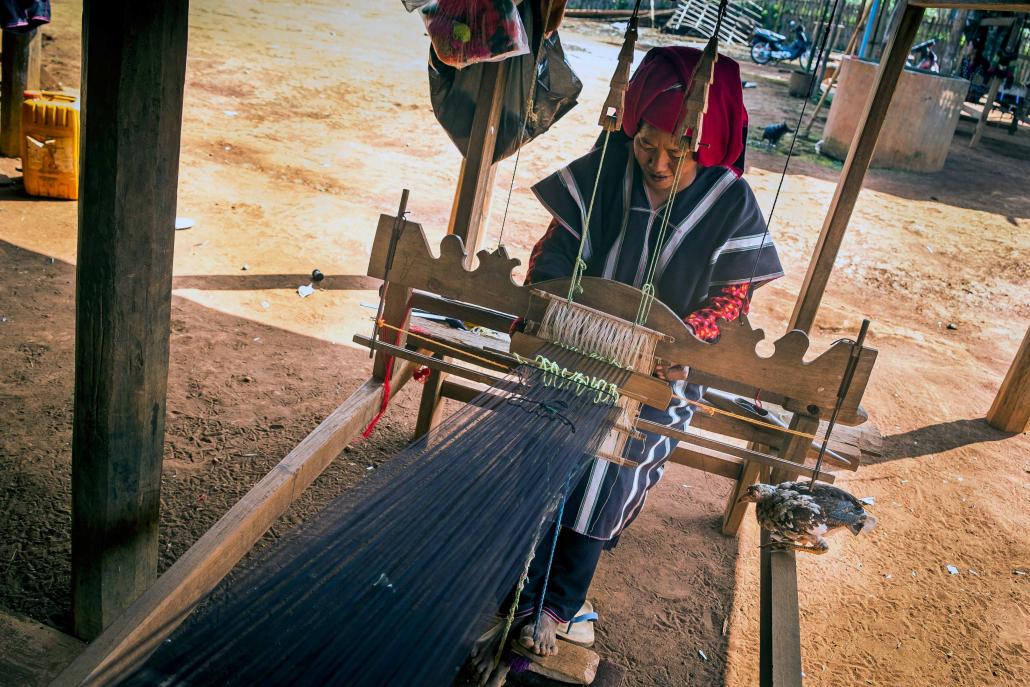
Teza Hlaing / Frontier
Amid such a lawless situation, Yin Net elders in the village — the name of which residents asked not to be used — visited by Frontier were encouraging their children to receive an education. Children aged between five and 12 were attending a primary school that can educate them only to Grade Four.
“We teach the children in Myanmar [language],” said Daw Win Htwe, 28, an assistant teacher at the primary school, originally from Myaing Township in Magway Region, who speaks a little Yin Net.
“You can’t teach them intensively,” she said. “They get on well with their lessons but the first and second graders don’t know Myanmar very well.”
The villagers’ inability to communicate in Myanmar deters them from seeking help at clinics in the event of a medical emergency and is a cause of death in Yin Net communities, the interpreter said.
The traditions maintained by the Yin Net include growing and weaving the cotton from which they make their clothes. An extract from another cultivated plant is used to dye the cloth black and it is decorated with silver sequins sewn with colourful thread. Traditional Yin Net attire includes the wide trousers found throughout Shan.
tzh_yinn_tribes28.jpg
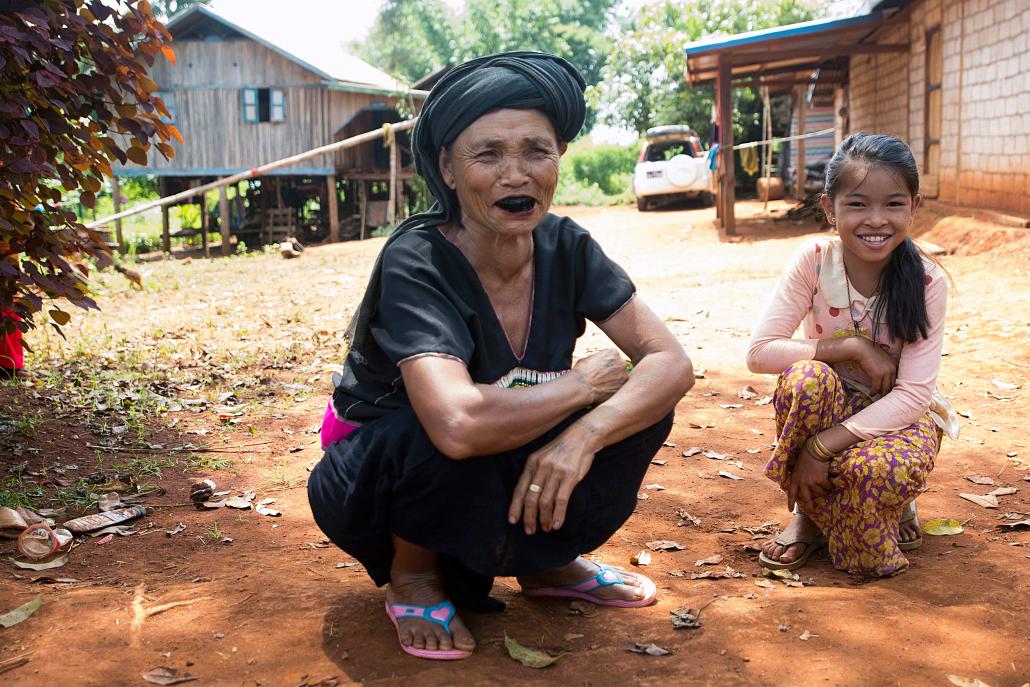
Teza Hlaing / Frontier
The Yin Net estimate their population in the tens of thousands but an accurate figure will not be available until the government releases long-awaited data on ethnic composition collected during the 2014 census.
The Yin Net seem confident of their ability to maintain traditions and customs.
“Our dances and customs are included in all our seasonal traditional events,” said a Yin Net elder who seemed to be in his 70s.
Traditional Yin Net events include ceremonies to celebrate the eating of the first harvest and summoning rain by holding tug-of-war contests. The seasonal calendar also includes Buddhist ceremonies, such as novitiations, and celebrating Thadingyut and other festivals.
However, older Yin Net men said some traditional practices, such as the custom of courting with a flute made from a dry gourd and bamboo, seemed to be in decline.
They expressed pleasure that Yin Net youth continued to perform traditional dances, swaying their bodies left and right and dragging and stamping their feet to the accompaniment of bamboo flutes, Shan drums and gongs.
The greatest source of uncertainty among the Yin Net is the lawlessness around them and its effect on their lives.
Asked through the interpreter what was his greatest wish, an older Yin Net man replied: “I want to make a living in peace.”


